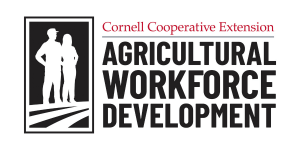Farm-provided employee housing has been in the news recently. New York Farm Bureau President David Fisher recently wrote an Op Ed in the Albany Times Union. Among other things, he pointed out the work that Cornell’s Ag Workforce Development program is doing to improve the quality of farm-provided employee housing. You can find many resources on our website focused on improving employee housing. Recently, we’ve added staff and re-launched our housing evaluation project. The farm-provided employee housing evaluation is non-regulatory and voluntary. It is an objective approach, using research and education to help farm employers provide safe, comfortable housing, that meets regulatory compliance. A Cornell specialist visits employee housing facilities to complete a checklist identifying strengths and weaknesses and provide immediate feedback to farm employers. We also provide technical assistance to help employers resolve any potential concerns. Farm employers who want to learn more about farm-provided employee housing management and to schedule an evaluation should contact Jay Canzonier at jc3277@cornell.edu. 
New York farms provide a wide variety of housing units for farm employees: bunkhouse style housing either seasonal or year-round, apartments, single family homes, occasionally hotel rooms, even rooms in the farm owner’s personal dwelling. These units are occupied by a wide range of employees, from single individuals working for just a few months, to the families of some employees who may have a tenure of decades with the farm. Management of the housing units varies widely, from intensely managed units with professional staff who supervise the housing, to reliance on the housing occupants to take charge of their own home. Finally, the quality of units varies, from superb and immaculate units, to acceptable units that are near the end of their life, to occasional problem situations that are unfit for people to live in.
The causes of unfit and unsafe employee housing are complex, so simple fixes won’t work. Responsibility for housing upkeep and management is shared between owners and occupants. In fact, the New York State Department of Health (NYSDOH) gets this right with their guidance document: Responsibilities of Operator and Occupants of Migrant Farmworker Housing. The responsibilities in NYSDOH’s document are specific to migrant/seasonal employee housing but they can be used as guidance for permanent employees as well.
Housing is in short supply in rural New York. Many farm employers provide housing and other benefits to employees at no charge. Farm employees can and will move from one job to another, and housing is sometimes a feature that employers use to attract employees. A farm employee housing “boom” seems to be underway and we are working with farm employers across the state to plan and improve their employee housing.


